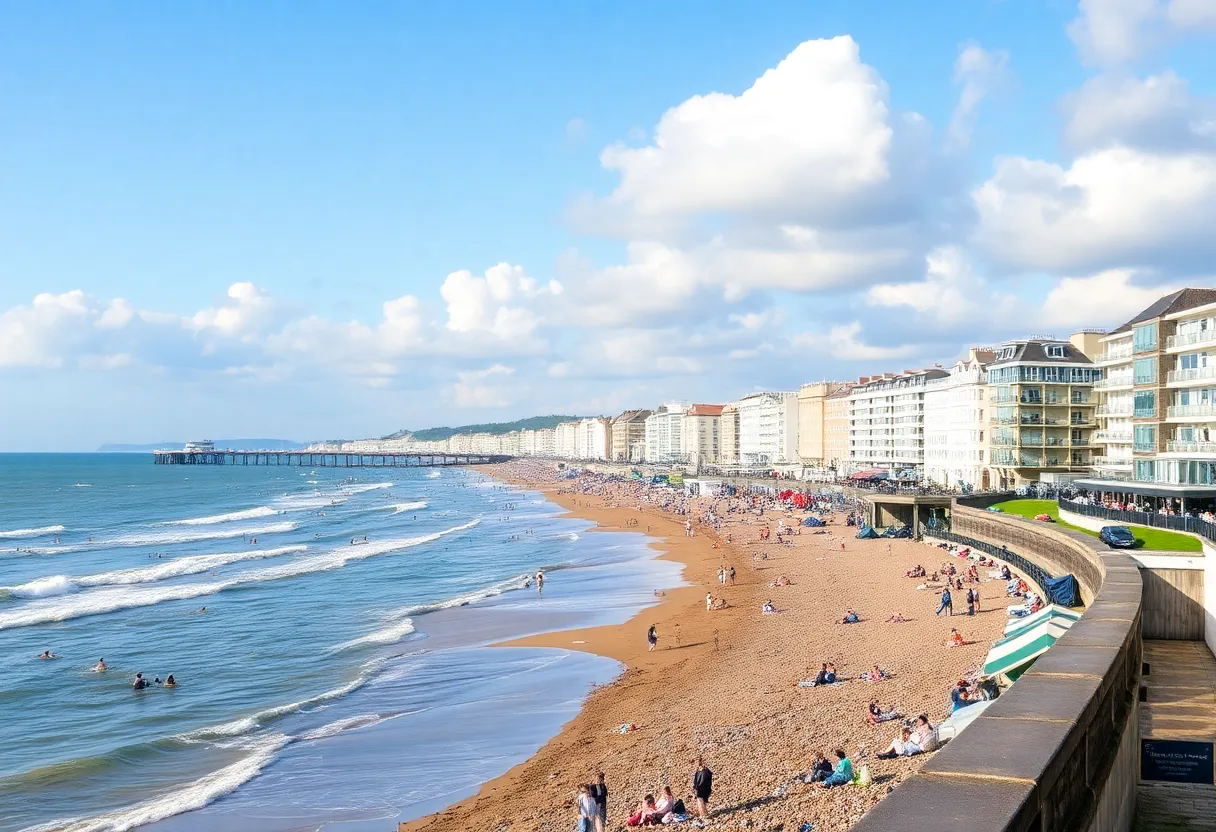News Summary
Brighton has transformed into a hub for leisure and therapeutic discovery since the Georgian era, attracting tourists for health-related sea bathing. This trend was initiated by figures such as Dr. Richard Russell, who advocated for the health benefits of seawater, while societal changes facilitated the rise of seaside resorts. The era saw a shift in attitudes toward the ocean, with bathing becoming a cherished practice, leading to Brighton’s prominence as a health destination that laid the foundation for modern wellness trends.
Brighton has become synonymous with seaside leisure and therapeutic discovery, a transformation rooted in the Georgian period between 1714 and 1837. This era saw the rise of seaside resorts that catered to a growing number of tourists seeking health benefits and rejuvenation, marking the beginning of what we now refer to as medical tourism.
Prior to this period, accommodations along the coast were primarily functioning as shelters for fishermen. However, as access to the coastline expanded, Great Britain’s seasides emerged as popular destinations for individuals seeking relief from various ailments. The notion of the ‘Sea Cure’ took off during this time, with claims that sea bathing could treat health issues ranging from melancholia to cancer and leprosy.
The trend was bolstered by the patronage of notable figures, including King George III, who significantly increased the social legitimacy of these health-focused excursions. Wealthy individuals began to flock to the seaside to take advantage of the purported healing properties of sea air and water, leading to a boom in health-related tourism.
Medical practices, however, were largely unregulated in Georgian England. The landscape was dominated by an industry characterized by questionable practices, enabling just about anyone to claim expertise in providing medical care. Treatments often lacked scientific foundation and were based on ancient theories, such as the four humors of ancient Greece. These theories encouraged methods like purging and bloodletting and highlighted the limited practical skills of medical practitioners of the time.
A pivotal figure in popularizing sea treatments was Dr. Richard Russell, whose publication A Dissertation on the Use of Sea Water in 1750 ignited the sea bathers movement. He articulated the health benefits of seawater, emphasizing salt’s unique properties compared to mineral waters, and reported successful outcomes that enhanced the credibility of seaside remedies.
Russell’s commitment to his claims led him to establish a seaside home in 1753, where he guided patients’ bathing regimens. His influence was significant enough to transform Brighton from a simple fishing village to a leading resort town, attracting affluent clients and distinguishing it as a health hub.
Seaside bathing etiquette also evolved during this time. Women used specially designed bathing machines to maintain modesty, discreetly changing in mobile structures that transported them into the water, while men often bathed without clothing. This marked a fundamental shift in social practices around bathing, making it more accessible and acceptable to a wider audience.
Literary contributions, such as those by Jane Austen, reflect the growing cultural embrace of sea bathing. Austen’s own experiences highlighted its popularity among the literary elite, reinforcing the notion that bathing in the sea was a cherished activity, even during the colder winter months. In fact, her cousin recorded various health improvements thanks to this practice.
The 18th century also witnessed the emergence of a burgeoning economy that allowed more citizens to indulge in leisure activities, including seaside vacations. Consequently, seaside towns commercialized their burgeoning status, with newspapers advertising bathing facilities and accommodations catering to tourists.
By 1815, advancements in travel literature, including a guidebook for seaside destinations, enhanced navigation and accessibility, further promoting the growth of this new leisure culture. Brighton, in particular, cemented its status as a prestigious resort, attracting patrons of the aristocracy like the Duke of Marlborough and King George III himself, whose positive bathing experiences at Weymouth encouraged the royal court to visit the resort.
The evolving perception of the ocean mirrored broader societal changes; once considered fearsome, the coast transformed into a sanctuary for healing and leisure. Early voyages by explorers such as Magellan and the triumphant publication of narratives like Robinson Crusoe established this therapeutic reputation.
As the Victorian era introduced bathing machines to maintain women’s privacy, the legacy of the ‘Sea Cure’ undeniably continues. Modern wellness trends increasingly draw upon natural remedies and seaside retreats, showcasing how the historical practices of Georgian England lay the groundwork for contemporary health-conscious behaviors and lifestyle choices.
Deeper Dive: News & Info About This Topic
HERE Resources
Additional Resources
- History: Sea Cure Beach Resort
- Thrillist: Hysteric Women Sea Cure TikTok Trend
- Time Out: Best Brunch in Brighton
- Sky News: Police Seek Men After Assaults on Beach
- BBC News: Seaside Health Practices in History
- Wikipedia: Medical Tourism
- Encyclopedia Britannica: Seaside Resort
- Google Search: Brighton Seaside Resort History
- Google Scholar: Health Benefits of Sea Bathing
- Google News: Brighton Seaside News
Author: STAFF HERE BALTIMORE WRITER
BALTIMORE STAFF WRITER The BALTIMORE STAFF WRITER represents the experienced team at HEREBaltimore.com, your go-to source for actionable local news and information in Baltimore, Baltimore County, and beyond. Specializing in "news you can use," we cover essential topics like product reviews for personal and business needs, local business directories, politics, real estate trends, neighborhood insights, and state news affecting the area—with deep expertise drawn from years of dedicated reporting and strong community input, including local press releases and business updates. We deliver top reporting on high-value events such as the Baltimore Book Festival, Preakness Stakes, and Artscape. Our coverage extends to key organizations like the Baltimore Chamber of Commerce and Visit Baltimore, plus leading businesses in shipping and healthcare that power the local economy such as the Port of Baltimore and Johns Hopkins Medicine. As part of the broader HERE network, we provide comprehensive, credible insights into Maryland's dynamic landscape.





